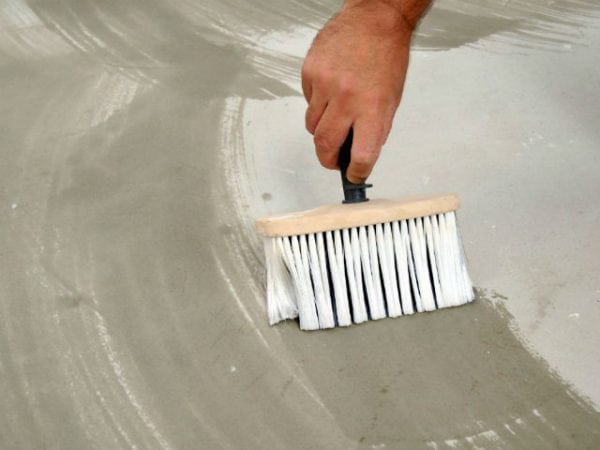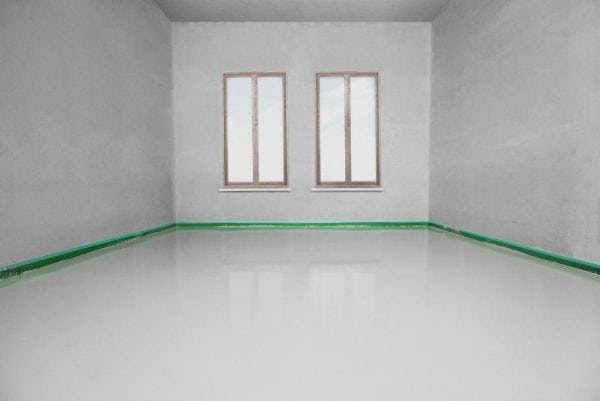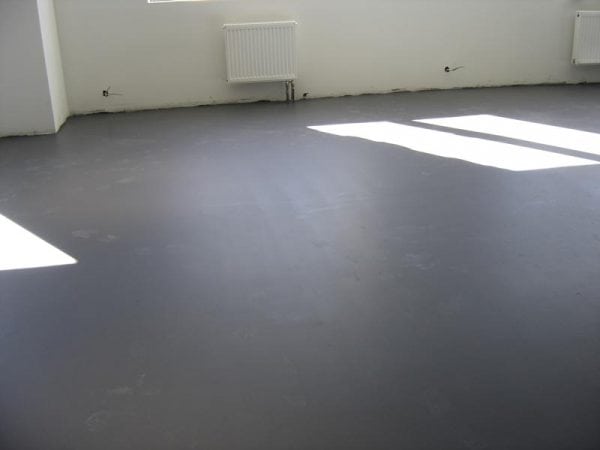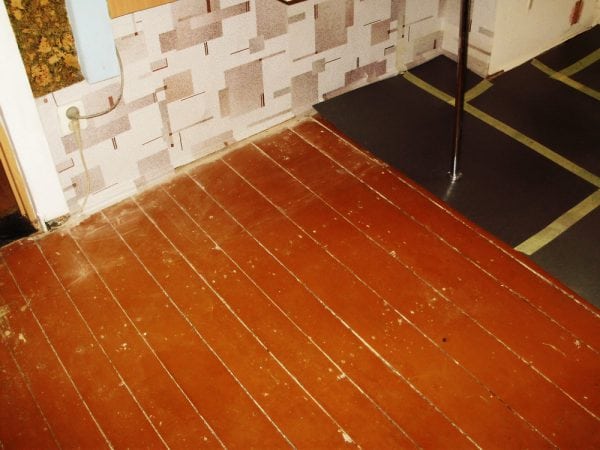Even the most expensive, durable and high-quality laminate will not last long if you put it on a floor not prepared by a primer. The fact is that various surface irregularities during mechanical stresses increase the load on the castle joints of this coating. As a result of this, cracks appear on them, leading to loosening and complete failure.
- Primer Functions
- Foundation requirements
- Concrete laying
- Types of protective coating for concrete
- Laying on a wooden base
- Types of protective coating for wood coating
- Features of the application of primers
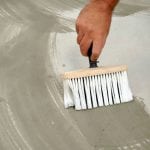
The second factor that reduces laminate life is increased humidity. It is especially dangerous if this effect comes out from under the screed constantly, causing the product to deform and break the locks. Moisture can flow through cracks in an untreated concrete base.
To avoid these negative influences, before laying the laminate, it is necessary to carefully level the surface of the floor and primer it.
to contents ↑Primer Functions
The main purpose of the primer is to ensure good adhesion of one processed material to another, called adhesion. But besides this, the mixture performs a number of additional functions, which include:
- Binding of dust particles on the treated surface, which often interfere with the bonding of materials.
- Strengthening the base structure by filling in the voids and creating powerful bonds between the layers of the material. Such mixtures are called deep penetration primers.
- Providing moisture resistance of the base.
- Protecting the floor from mold damage, which destroys the material, and also adversely affects human health. This property is possessed by coatings with fungicidal additives.
Foundation requirements
There are a number of requirements that apply to all types of substrates for a given floor covering. These include:
- Evenness. The maximum allowable height difference is 2 mm per 2 linear meters of surface length.
- Purity. The fine sand and dirt particles remaining under the laminate create an unpleasant creaking sound while moving on it.
- Uniform bias. This parameter should not exceed 4 mm per 2 m of the room.
- Dryness. Any base must be allowed to dry well before applying a primer. Otherwise, this may lead to swelling of the coating.
Concrete laying
In the case when the concrete was carefully equal when pouring, and the gravel was crushed into the composition of the fine fraction, small irregularities and differences can be corrected by applying a self-leveling mixture. This procedure is carried out in several stages:
- Processing of small cracks with glue for tiles.
- Surface coating with a deep penetration primer.
- Dilution of the finished mixture according to the instructions to the consistency of homemade sour cream, without lumps and extraneous mechanical impurities.
- Pouring solution. The process must be started from the highest place, and after the mixture is distributed by gravity over the entire surface of the floor, level it with a wide spatula.
- Rolling out air bubbles from the leveling mass with a roller.
This concludes the process.Now the solution needs to be allowed to dry for several days, and only then begin laying the laminate.
But most often, the concrete base has significant irregularities, bevels, cracks and other flaws, the alignment of which can take a large amount of a fairly expensive leveling composition. In this case, it is more advisable to make a concrete screed.
Before installing the coating, the surface of the floor should be primed. This will strengthen the base base and prevent it from crumbling during operation.
to contents ↑Types of protective coating for concrete
For the treatment of concrete substrates, not all types of primers are suitable. Therefore, in this case, you need to choose the following:
- Acrylic mixture, which is universal and suitable for both concrete and wood, drywall, synthetic materials.
- Epoxy mortar is used to protect concrete surfaces. It reliably protects from moisture and is resistant to many chemicals.
If necessary, antiseptic additives must be added to these mixtures that exclude the development of pathogenic and fungal microflora.
After applying one coat of primer, wait 6-8 hours and apply a second coat. This is done so that the surface of the base substrate is well saturated, and small particles of cement and sand do not lag behind it.
A substrate of foamed polyethylene or cork is laid on a primed surface. It will create additional protection against moisture, provide thermal insulation and reduce the level of noise penetrating into the room. After that, you can begin installing the laminate.
to contents ↑Laying on a wooden base
Before laying the laminate on an old wooden base, make sure that the boards are not rotten and are suitable for further use. Otherwise, they must be replaced. Small irregularities can be smoothed out by cycling, but a significant level difference will be corrected only by laying OSB-plates or similar materials. Their fastening to the floor is carried out by self-tapping screws, the caps of which are recessed into the coating by 2-3 mm.
The deflection of the boards with mechanical impact on them is unacceptable and requires elimination. The reason may be the wrong distance between the lags, which can be corrected by increasing the thickness of the boards. Another option to solve the problem may be to lay another layer of material perpendicular to the existing one, and fix the plywood sheet on top.
The creaking of the wooden floor will be heard after installing the laminate on it. Therefore, this defect must be eliminated.
The next preparatory step will be the application of a primer.
to contents ↑Types of protective coating for wood coating
For processing wooden surfaces, a universal acrylic mixture can be used, as well as specialized solutions, which include:
- alkyd mixture;
- polystyrene primer, which must be used very carefully and only in a well-ventilated area, as it contains toxic substances;
- shellac mixture - intended only for fresh coniferous wood. It prevents the resin from escaping onto the surface of the material.
to contents ↑After priming, the floor surface is lined with a substrate and covered with laminate elements so that they are directed perpendicular to the boards.
Features of the application of primers
Processing of any surface before applying a primer to it should begin with thorough cleaning. It is necessary to remove not only debris and dirt, but also to collect dust with a vacuum cleaner. If there are greasy stains on the substrate, they must be treated with a solvent.
Only a dry surface can be primed, so the presence of wet areas on it is unacceptable.
Having applied the first layer of soil, you should wait until it completely dries.Manufacturers indicate its duration on the package, and this should not be neglected. However, do not make large temporary breaks, as this leads to dust settling.
Usually two layers of material are sufficient, but if the surface to be treated is very porous or loose, another application may be necessary.
Proper treatment of the floor surface before installing the laminate is a guarantee of long-term operation of this floor covering. And the use of primer mixtures makes it possible to avoid the rapid destruction of the base and the development of mold, and also will resist moisture and other negative factors.

